Peru 2
page 1 | page 2 | page 3 | page 4 | page 5
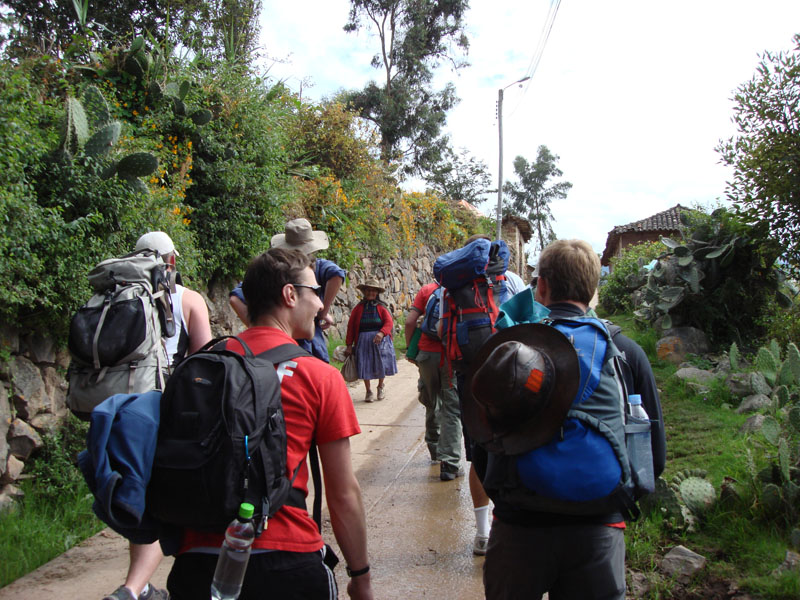
And so we began our 80+ km trek. Beginning at the altitude of about 3400m and needing to get to Salkantay pass which is at 4600m by the second day, we knew which direction we needed to go - up. We hiked with large-ish day packs while the horses carried all the hard-core camping gear (tents, sleeping mats etc.)
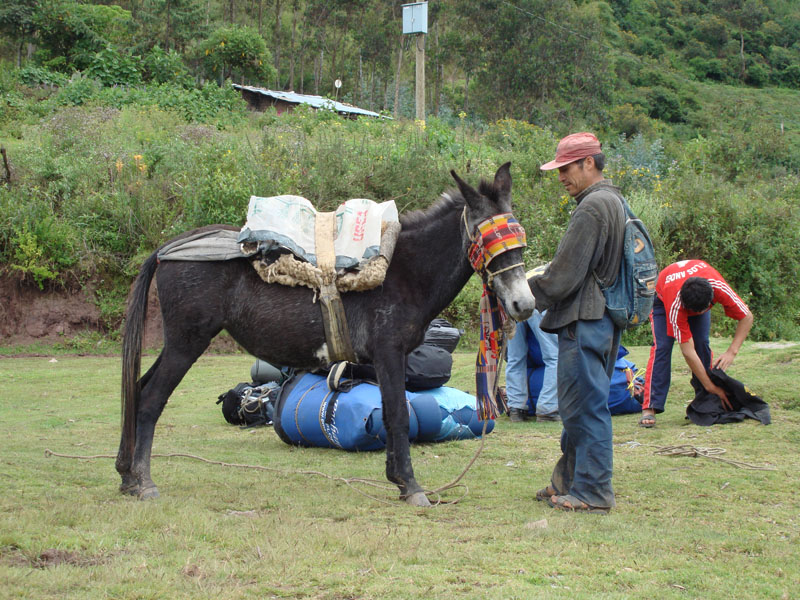
Our stuff wasn't exactly light, so to coax the horses into carrying our stuff, the horsemen blindfolded the horses before loading them up.
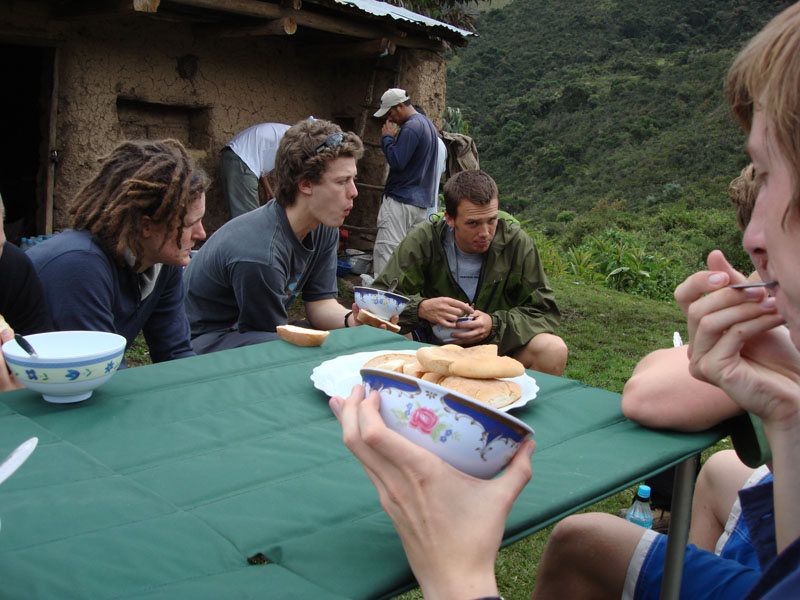
Lunch on the first day was taken at the side of the path. This was our first course - soup, with cheese that squeaked on your teeth when you chewed it.
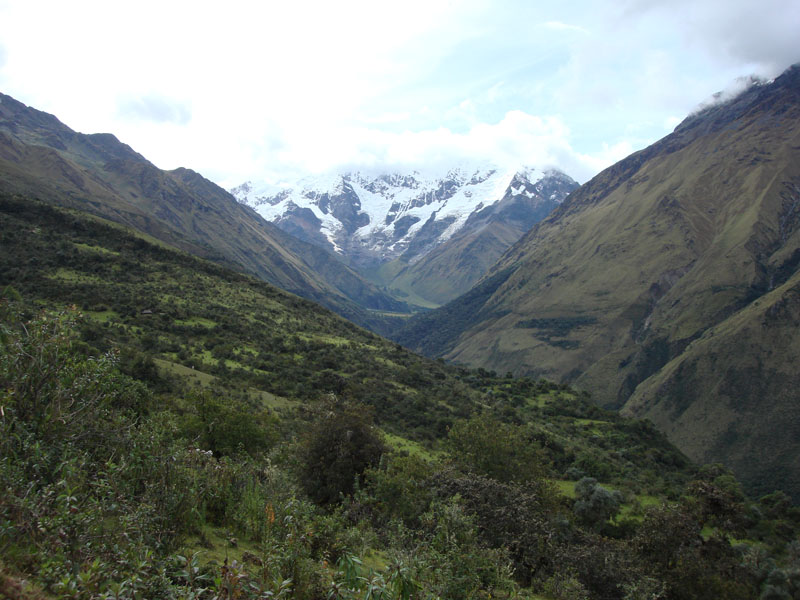
There it is, Salkantay, 6100m of mountain in the Peruvian Andes. It looks a long long way away.
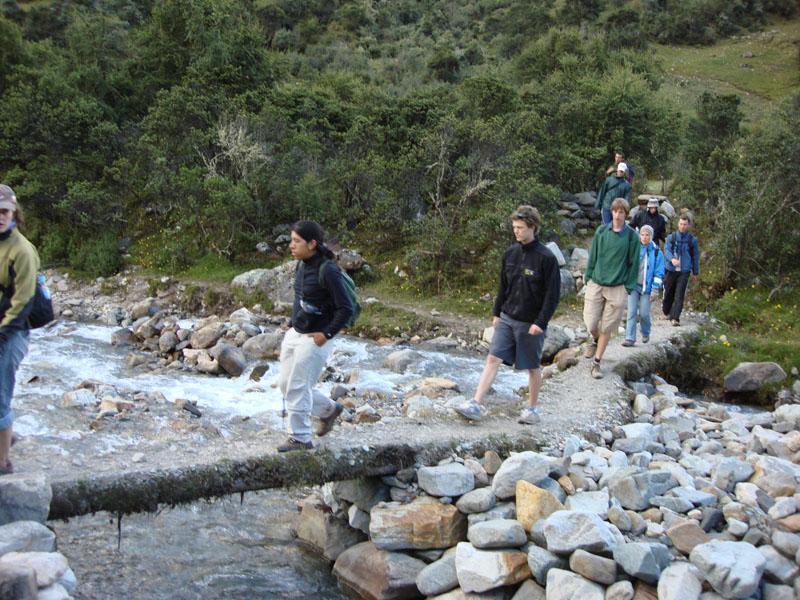
Although we walked for a good 6 hours on the first day, it was fairly relaxed most of the way. Most of our "river" crossings were of this nature...
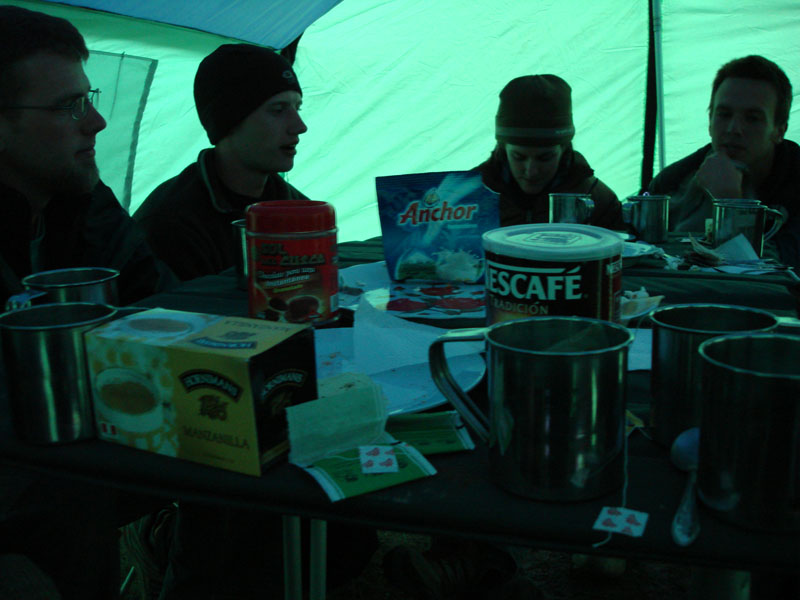
We arrived at our campsite for the first night with a few hours of sunlight to spare so we sat around drinking tea, eating bread and just chatted while waiting for the cooks to prepare our dinner.
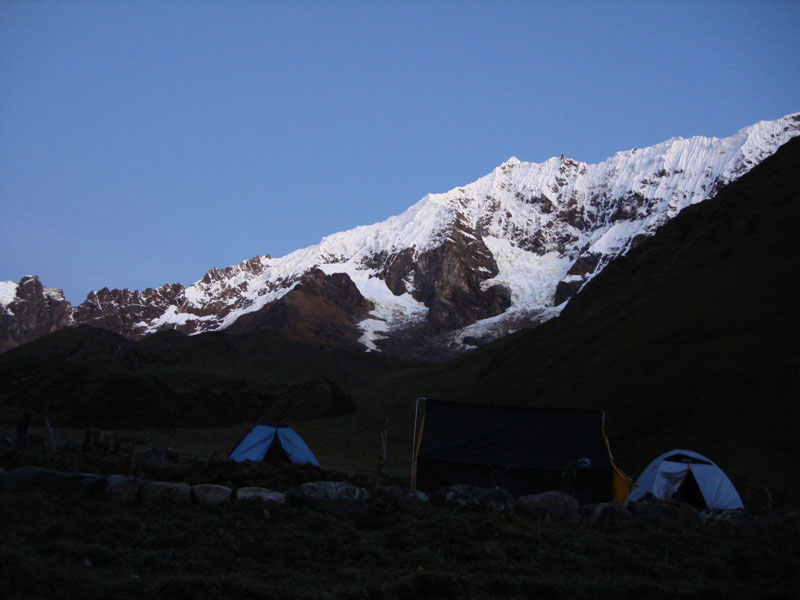
The morning was exceptionally clear (which also meant that it was exceptionally cold) which afforded us a good view of the mountains which we were going to hike between.
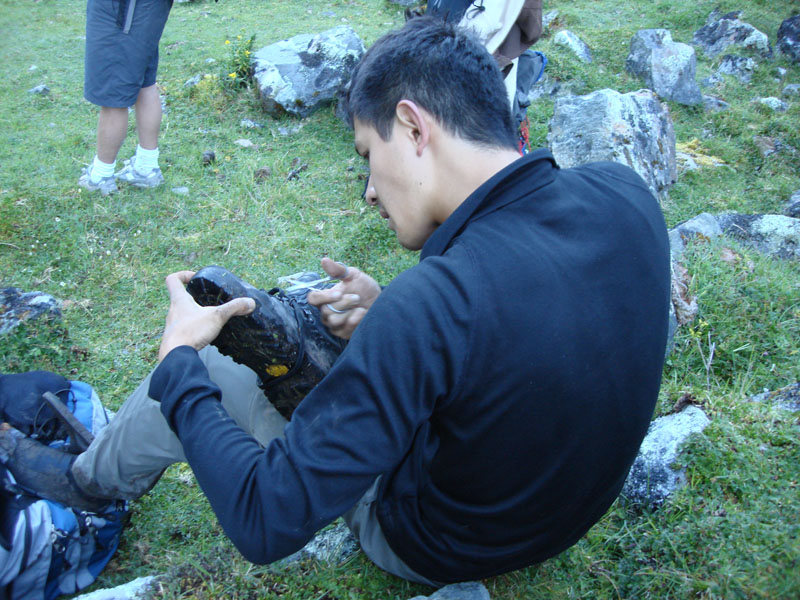
Unfortunately, I didn't take my boots on this little trip, I figured that it wasn't worth it since I would only really need them for five days (out of five months). So, I rented a pair of boots from a shop in Cusco. Although they seemed to fit fine at the time, it turns out that they were just a little bit too small and at a very early stage of the 10 hour trek of day 2, my feet told me that they'd had enough. So I borrowed some scissors from a first aid kit and performed minor surgery on my rental boots.
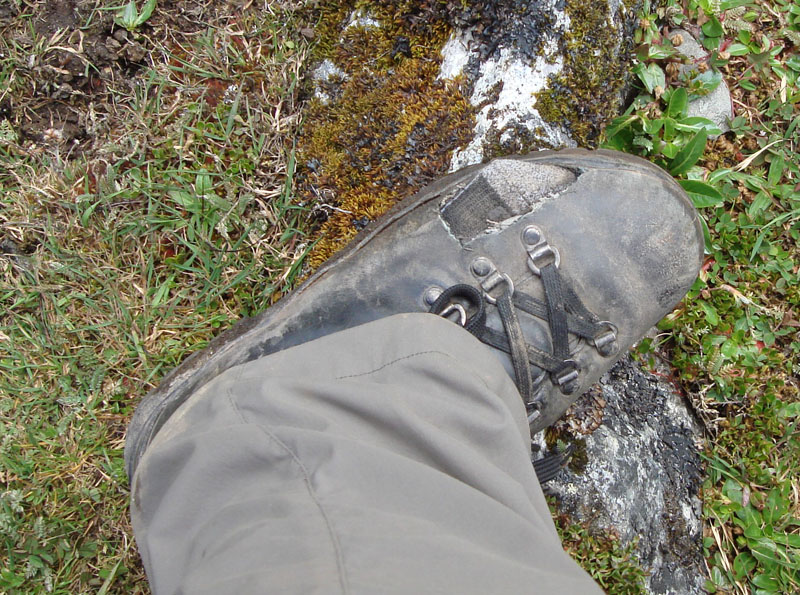
Ahhh... that's better. Apart from my socks getting very very muddy, my feet were fine for the rest of the hike.
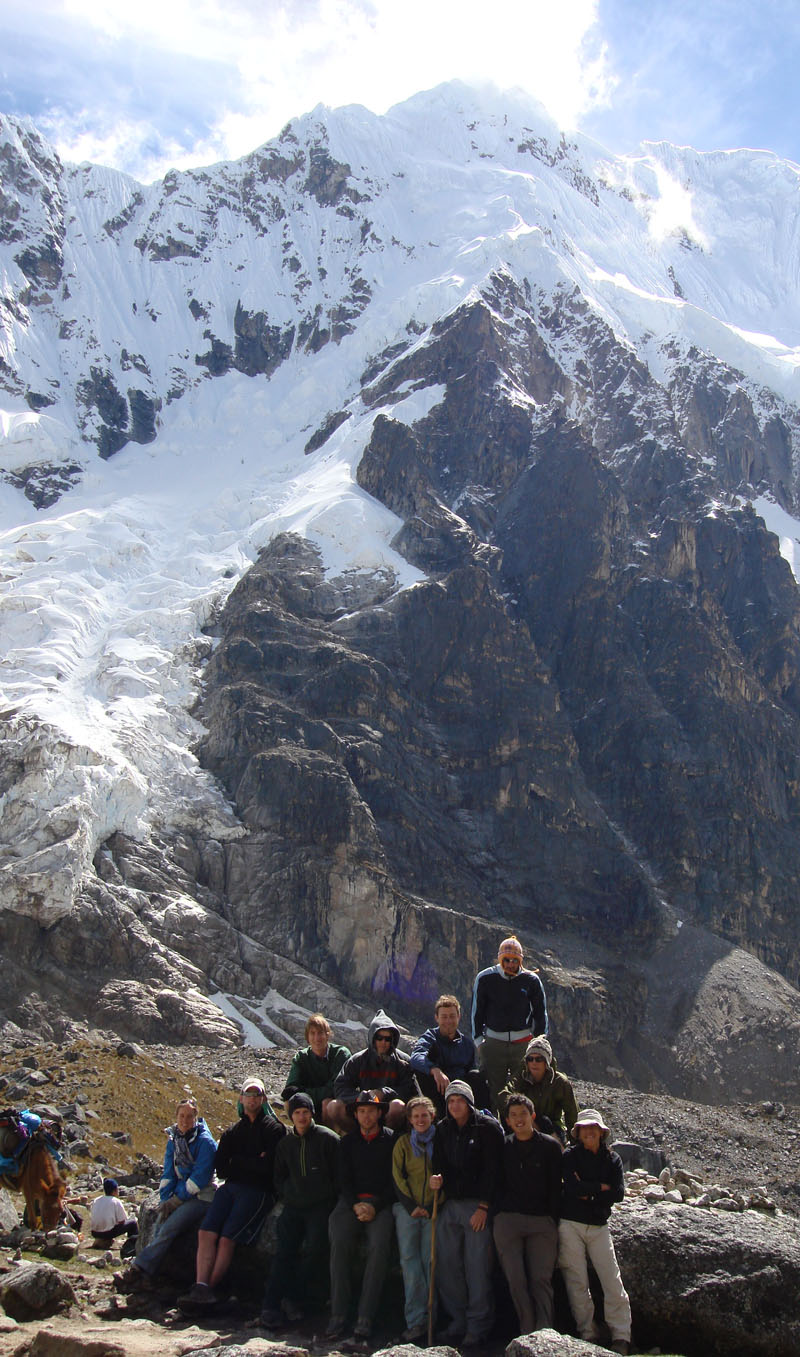
After only five hours of intense trekking at altitude, we finally reached Salkantay pass. At 4600m the altitude was enough to make your head spin. Luckily, it was all downhill from here. The group of us, feeling particularly proud of having completed the most difficult part of the whole trek decided that we'd have a group photo.
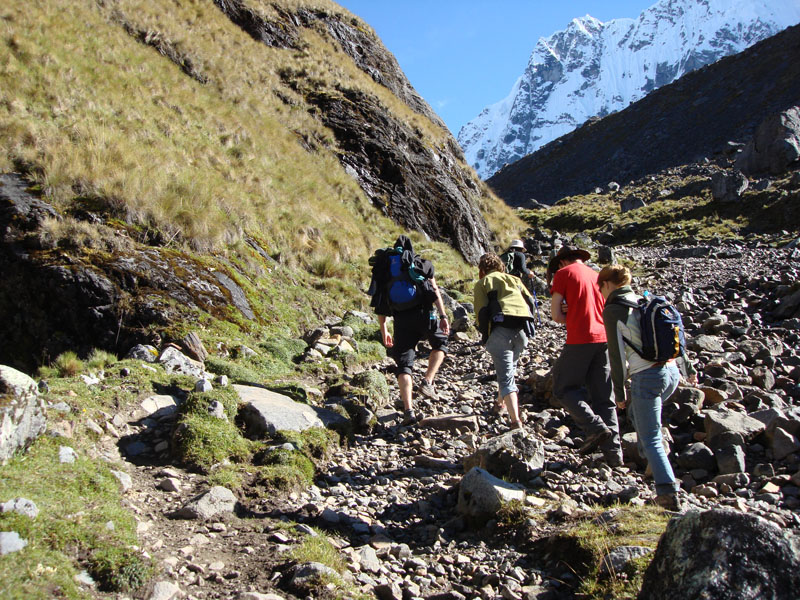
The rest of our little stroll was no easy task. Even after several hours of descending, we were still walking through terrain which was devoid of trees and cows.
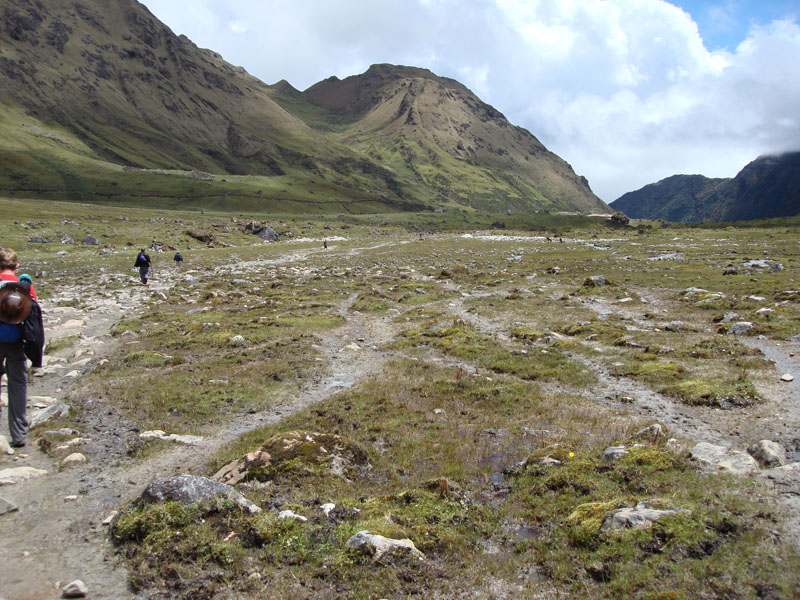
Not only that, it was the wet season here in Peru, which meant that the ground was quite muddy and soggy in places (not good, considering my boots).
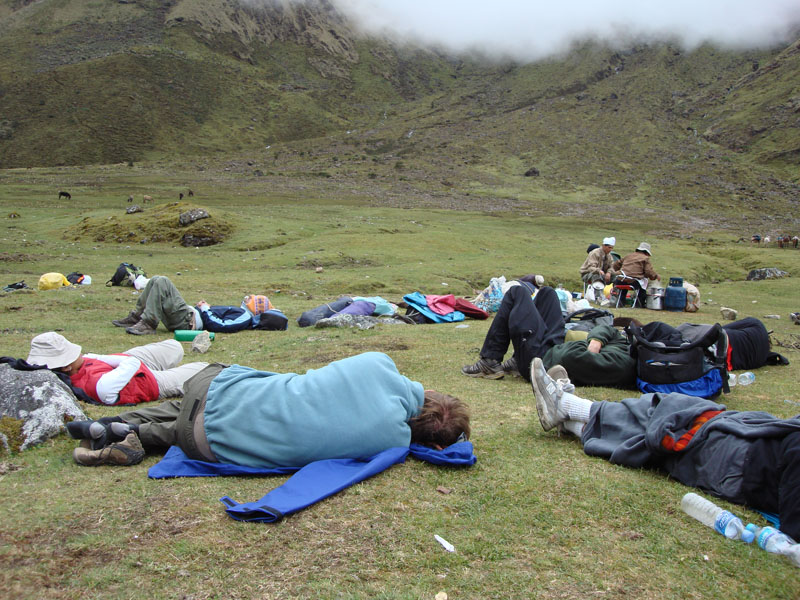
We reached the lunch site an hour ahead of schedule so our guide told us to just have a little nap while our lunch was being prepared. When we woke up, almost all of us had terrible headaches from the altitude.
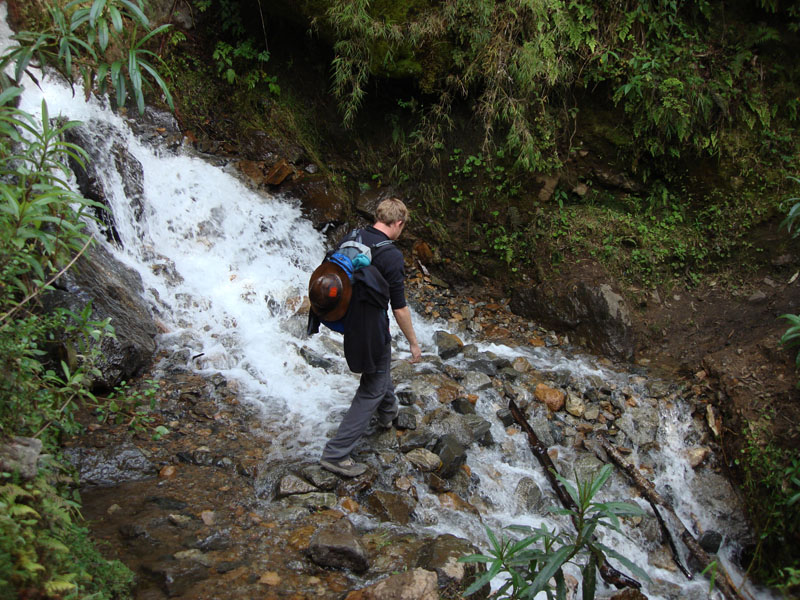
The scenery did eventually start to get better with shrubs and trees beginning to appear at the side of the path to keep us company.
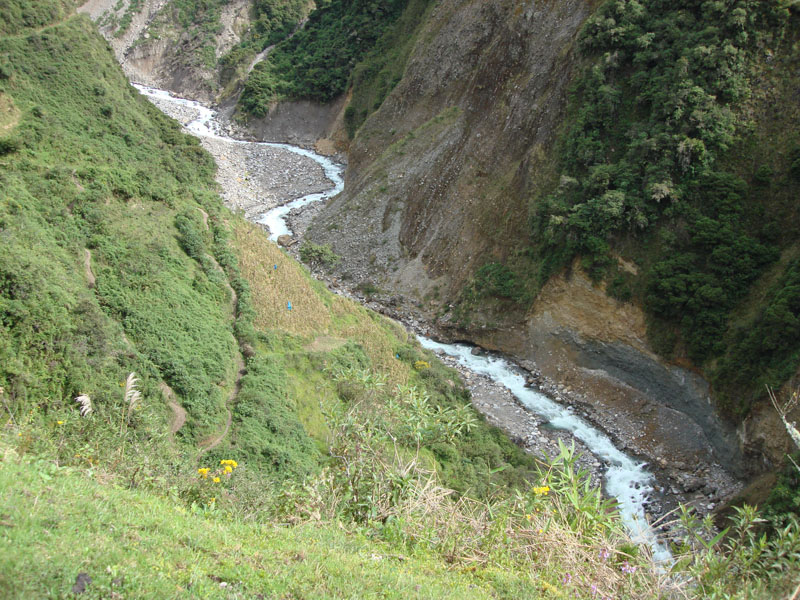
For most of the early part of the trek, we walked along a valley at the bottom of which lay a river - Rio Blanco. The river is supplied by ice melting from the glaciers on Salkantay and the surrounding snow-capped mountains. This meant that your hands went numb from the cold every time you rinsed them in the little streams that supplied the river.
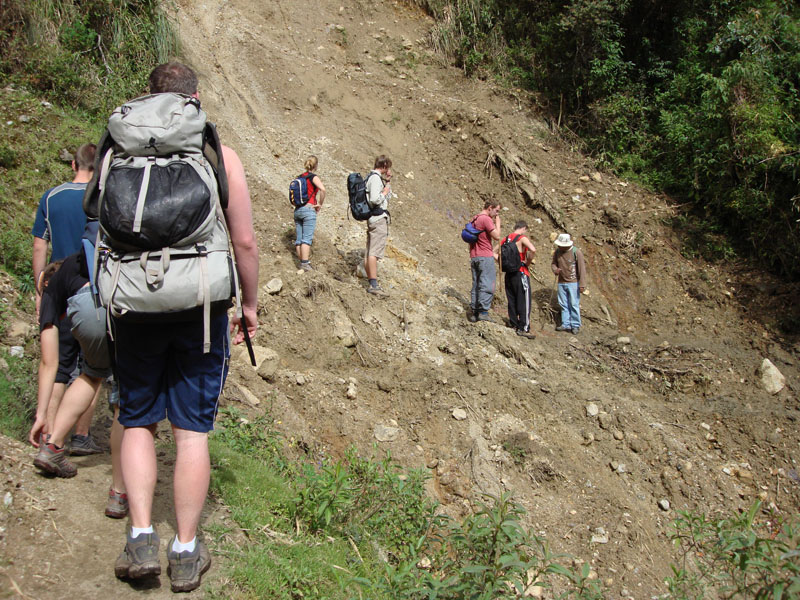
Another wonderful thing about trekking in Peru during the wet season is landslides. This was a very minor one and merely made it difficult to find the path.
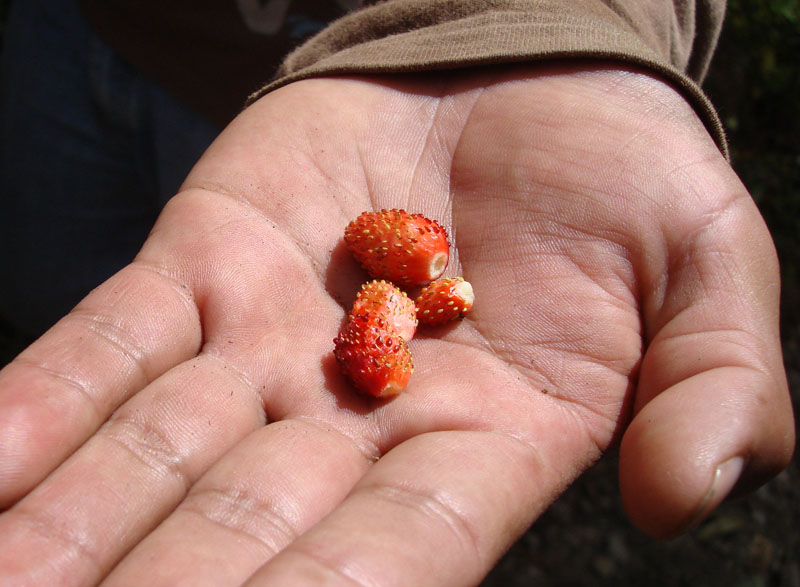
Along the path, we found lots of wild strawberries. They were very sweet, but generally not very big.
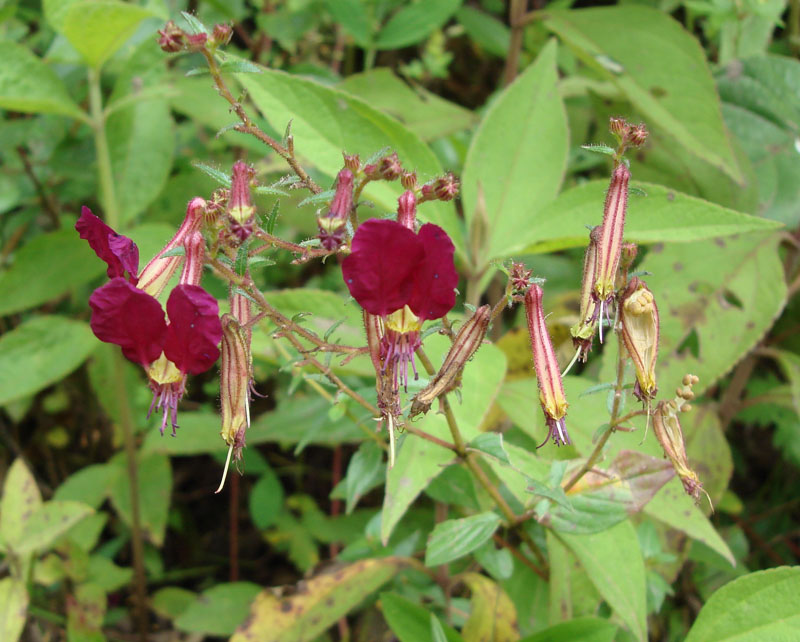
As in Venezuela, there were lots of Orchids, or Orchidias in Spanish.
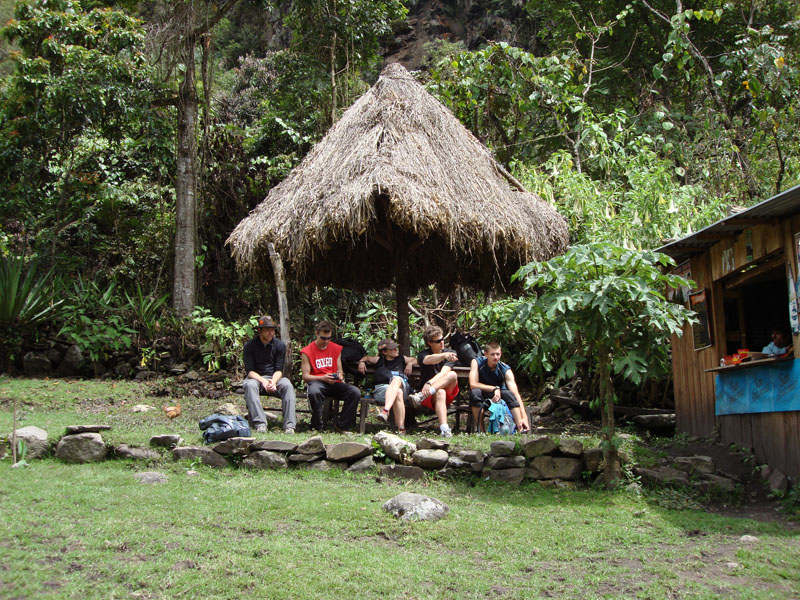
Every now and then, there would be small settlements which seemed to exist for the sole purpose of selling drinks and snacks to tourist trekkers like ourselves.
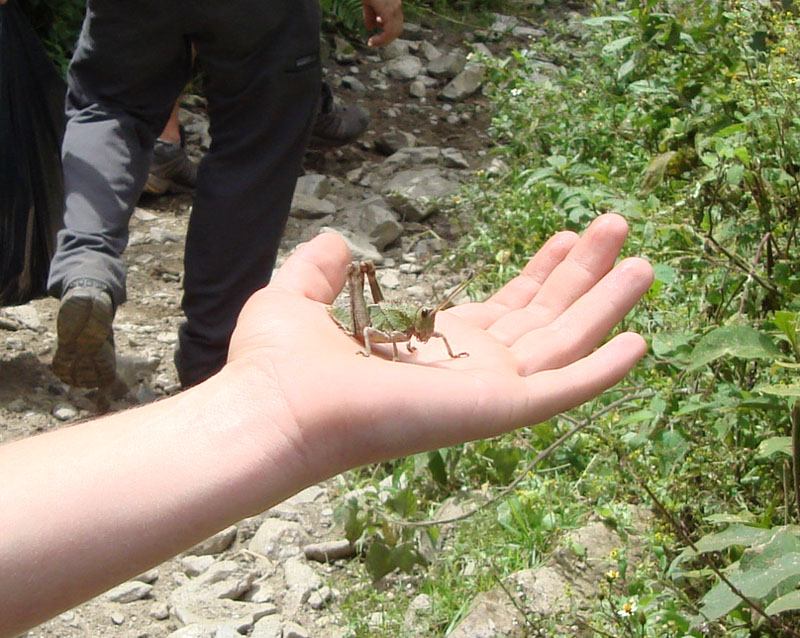
The wildlife here was also very friendly and surprisingly tame. This grasshopper is doing a palm-reading for Lauren. Unfortunately, none of us spoke grasshopper so we were unable to determine Lauren's future.
page 1 | page 2 | page 3 | page 4 | page 5